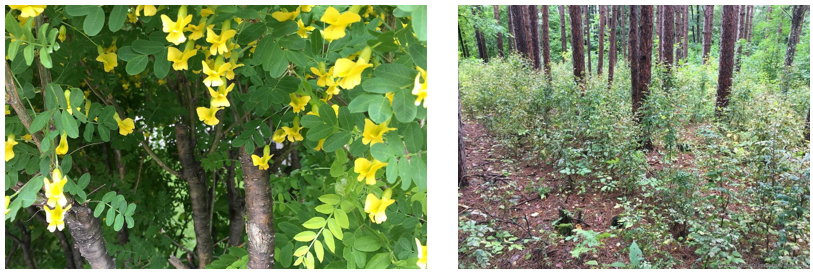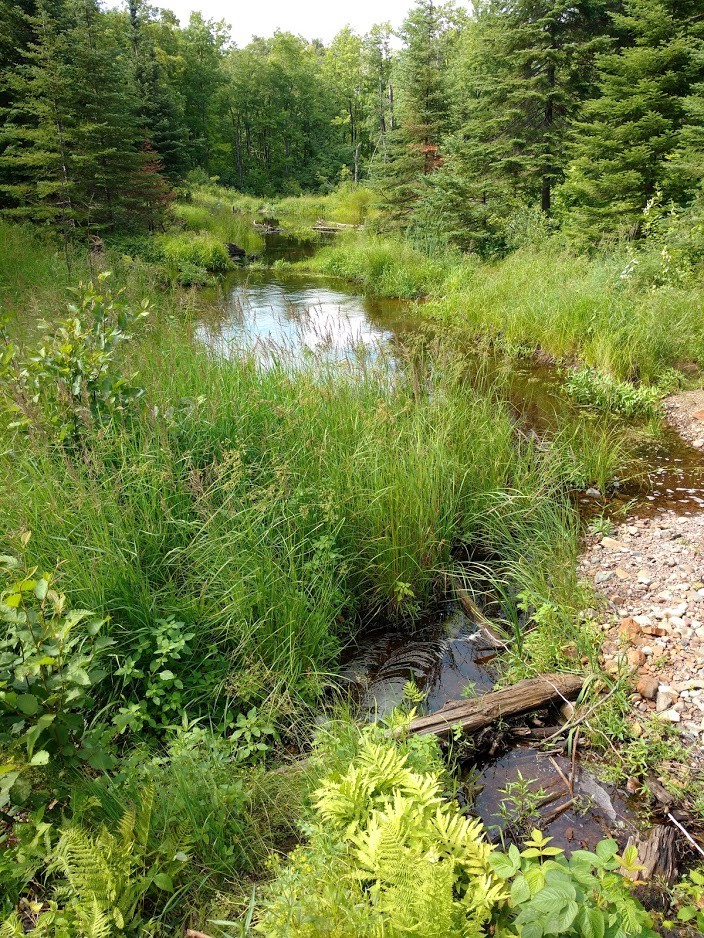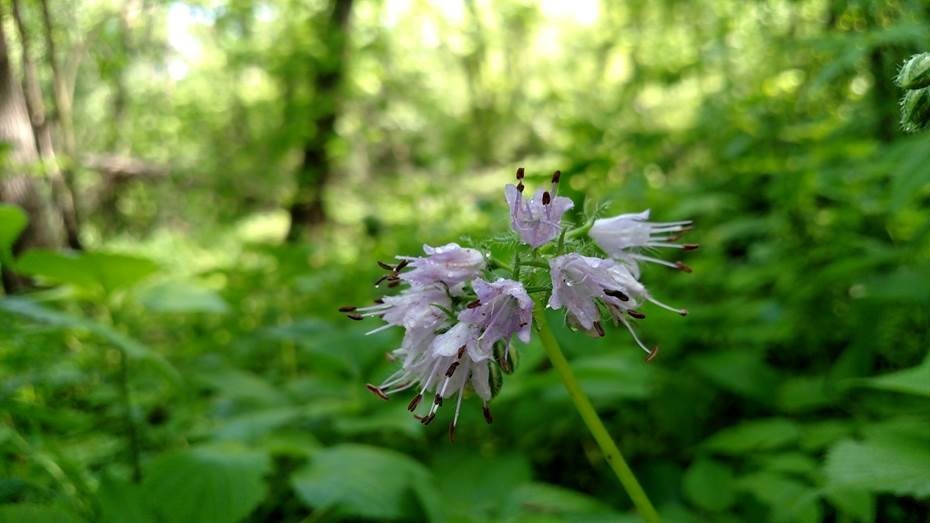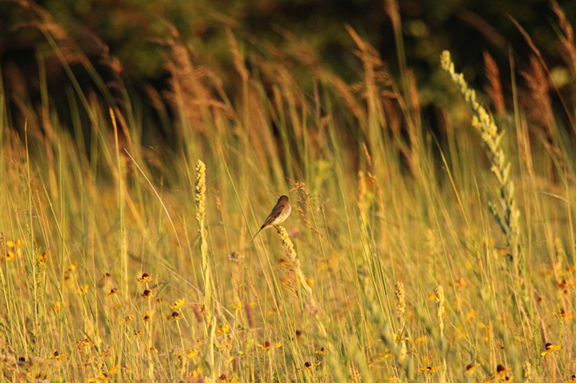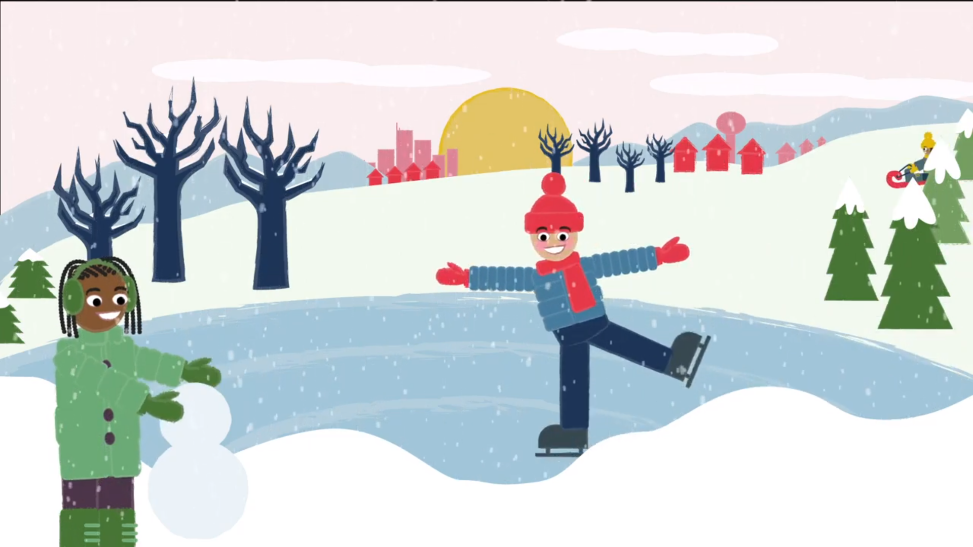Siberian peashrub (Caragana arborescens) is a restricted noxious weed in Minnesota. It has a background similar to Common Buckthorn, commonly found in hedge groves, shelterbelts, and wildlife plantings. Siberian peashrub is not as common as buckthorn but is becoming more prevalent throughout the state. These plants have an extensive root system and the ability to self-reproduce to create new infestations. Last year, infestations in Bunker Hills regional park were surveyed and mapped by ACD staff. These maps were used during three days of targeted treatment by ACD this winter. After three days, ACD completed cut-stump treatment on 14 infestations which totaled approximately 3.5 acres.
Carrie Taylor, ACD's Restoration Ecologist, enjoys all manner of outdoor adventures including skiing, gardening, camping, and canoeing. She always makes time to explore nature, go on hikes, and "hunt" for wildflowers with her family. She loves bringing her daughters out with her even though she sometimes has to remind them that "skiing… hiking… canoeing… it's what we do!"
Prior to living in Minnesota, Carrie lived in Illinois, Indiana, Oregon, Montana, and Sweden. Since moving to Minnesota 6 years ago, Carrie has made a point of exploring all the natural areas the state has to offer. One of Carrie's favorite places in Minnesota that she has explored thus far is the Superior Hiking Trail at Bean and Bear Lakes. She appreciated the topography, the wildness, and the beautiful multi-layer beaver dam complex that she and her family stumbled across.
Carrie is also active with the Master Gardener program and enjoys volunteering with many organizations especially coordinating landscape design and installation with new homeowners through Habitat for Humanity.
Outside of Carrie's work conducting natural resource monitoring, inventory, assessments, and planning, and coordinating ecological restoration projects for the District, she is involved in landscaping and adding native and edible plants at her daughters' schools and helping lead some of their Girl Scout activities.
To contact Carrie, reach out to
Becky Wozney, ACD's Wetland Specialist, has always had a strong connection to nature. When she was a girl growing up in Pine County, she would regularly ride her horse, Annie, through her family's pastures for hours on end. She fell in love with nature and the outdoors while exploring her family's property with her dogs and today believes that outreach and education can really change how people, especially children, interact with our natural resources. "Anytime we can get kids outside and teach them to respect nature, it will have a large impact on them later in life," says Becky.
Now that Becky has her own daughters, she tries to instill in them the same love of the outdoors that she learned as a kid. She and her family all love to travel and have visited 30 states (including Alaska and Hawaii!) plus Costa Rica and Canada. They are planning a Europe-based trip in 2022. Becky and her family also greatly enjoy spending time on the lake in their boat or kayak, camping in Minnesota's state parks, and hiking with their dog, Millie.
Outside of Becky's work providing technical assistance and Wetland Conservation Act (WCA) regulatory assistance to county residents, she is involved in youth sports and volunteering on natural resource projects in her city.
To contact Becky, email
Colleen Werdien is a Minnesota native, growing up with her family in Mounds View before moving to Anoka County 25 years ago. She settled first in Columbia Heights, but seven years ago when she saw an article in the paper about an old house for sale that was originally built in 1852, she decided to move to the city of Anoka very near the banks of the Rum River.
Growing up, nature was always easily accessible for Colleen. In her childhood home, Colleen fell in love with the knee-high prairie grasses and small creek running through her backyard and the forest right across the street. Colleen carried these experiences in nature throughout her life, naming several significant places in Minnesota she loves to visit today including the Boundary Waters, Jeffers Petroglyphs in the southwest, and the prairies of Pipestone.
Her home in Anoka sits on ¾ of an acre that is largely shaded by mature trees. In her sunny boulevard, Colleen tends to a variety of native plants that are beneficial for pollinators while working to keep the invasive weeds and buckthorn at bay. If she's not out in her yard, you are most likely to find Colleen pursuing one of her many artistic interests from pottery to felt and wool, and from drawing to playing the ukulele and piano!
Colleen is already an active member of her community working with several local organizations and volunteer groups. She is an active member of the Andover Pollinator Awareness Project as well as the Anoka County Master Gardeners, both of which allow her to work with and advocate for the native prairie plants and flowers she adores. In addition, Colleen volunteers for her church and serves on the HRA Board working to purchase and revitalize homes that have fallen into disrepair.
Still, Colleen felt the desire to do more for her community to make an impact. She has been concerned about the state of our natural resources her whole life and when she learned of the work ACD does, she knew she would be able to make a big impact in conservation work throughout the county as a supervisor.
We are thrilled to welcome Colleen Werdien to the ACD Board of Supervisors representing District 1.
Minnesotans love their lakes, but we've got a growing problem with salt pollution. In this brand new short video produced by our partners in Washington County, the problem of chloride pollution is explained with easy-to-understand cartoon graphics and fun narration. The video also offers suggestions on what the general public can do to help protect Minnesota's waters from salt pollution!
The video is a great outreach tool for school or youth group sessions or for sharing on social media. Enjoy!
